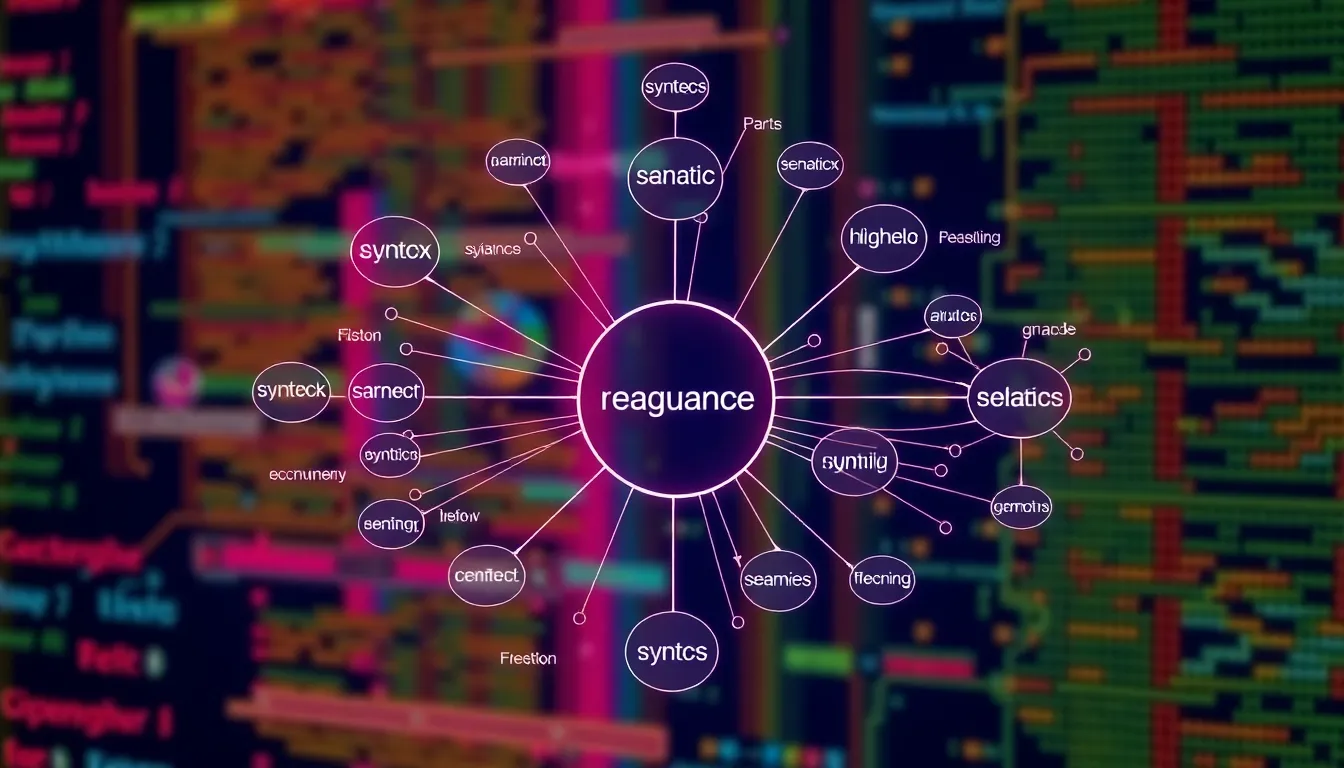Table of Contents
ToggleNatural language processing (NLP) is revolutionizing how we interact with technology. By enabling machines to understand and respond to human language, NLP bridges the gap between human communication and computer comprehension. This fascinating field combines linguistics, computer science, and artificial intelligence to create tools that can analyze, interpret, and generate text in ways that feel remarkably human.
From chatbots that enhance customer service to advanced translation services that break down language barriers, NLP is transforming industries across the globe. As businesses increasingly rely on data-driven insights, the demand for effective language processing solutions continues to soar. Understanding the fundamentals of NLP not only highlights its significance but also opens doors to future innovations that promise to redefine our relationship with technology.
Overview of Natural Language Processing
Natural language processing (NLP) serves as a bridge between human communication and machine understanding. NLP combines elements of linguistics, computer science, and artificial intelligence to facilitate interactions between computers and humans.
NLP functions through specific tasks, including but not limited to:
- Text Analysis: NLP algorithms dissect text to understand structure and context.
- Sentiment Analysis: NLP identifies opinions within text to gauge emotions and attitudes.
- Machine Translation: NLP translates text from one language to another, enabling global communication.
- Speech Recognition: NLP enables machines to recognize and interpret spoken language.
Applications of NLP extend across diverse fields. In customer service, chatbots leverage NLP to provide instant responses to user queries. In healthcare, NLP analyzes medical records and assists in diagnosis. In finance, NLP processes vast amounts of data to inform trading decisions.
The demand for NLP technologies continues to grow. Businesses are increasingly incorporating NLP solutions to enhance decision-making and improve user experience. As industries become more data-driven, the role of NLP in extracting insights from unstructured data becomes crucial.
NLP constitutes a vital component of modern technology, fostering efficiency and improving human-computer interaction. Understanding NLP is essential for adapting to rapidly evolving tech environments.
Key Components of Natural Language Processing

Natural language processing (NLP) encompasses various technical components essential for understanding and interpreting human language. Two of the key components in NLP include syntax and parsing, as well as semantics and meaning.
Syntax and Parsing
Syntax and parsing address the structure of sentences. Syntax involves the rules governing the arrangement of words, while parsing involves analyzing this structure to understand relationships between words. Techniques utilized in syntax include part-of-speech tagging, which identifies the grammatical roles of words, and constituency parsing, which breaks down sentences into sub-phrases. These methods enhance a machine’s ability to construct accurate representations of sentence structures, crucial for tasks such as translation and information retrieval.
Semantics and Meaning
Semantics focuses on understanding meaning within language. It investigates how words and phrases convey specific meanings and how context influences those meanings. Entity recognition identifies key components such as names or dates, while sentiment analysis assesses emotional tone. Word embeddings, such as Word2Vec and GloVe, represent words in vector space, capturing contextual meanings. These approaches enable machines to interpret language nuances, improving applications like chatbots and customer feedback analysis.
Applications of Natural Language Processing
Natural language processing (NLP) finds extensive application across various industries, enhancing efficiency and user experience. Prominent examples include chatbots, virtual assistants, and sentiment analysis, each transforming interactions and insights in meaningful ways.
Chatbots and Virtual Assistants
Chatbots and virtual assistants leverage NLP to engage users in conversations, providing immediate responses and assistance. Businesses implement these tools to handle customer inquiries, streamline operations, and improve engagement rates. Popular platforms like Facebook Messenger and WhatsApp integrate chatbot solutions, allowing companies to reduce response times and optimize customer service. Examples include:
- Customer Service: Chatbots assist users with frequently asked questions, guiding them through the sales process without human intervention.
- Booking and Scheduling: Virtual assistants manage appointments, reservations, and reminders, freeing up time for both users and organizations.
- E-commerce: Chatbots offer personalized product recommendations, enhancing user experience and increasing conversion rates.
Companies employing chatbots and virtual assistants often report improved customer satisfaction and reduced operational costs due to increased efficiency.
Sentiment Analysis
Sentiment analysis enables organizations to gauge public opinion through the evaluation of text data from sources such as social media, customer reviews, and surveys. By applying NLP techniques, businesses extract sentiments and emotions from unstructured data, informing strategies and decision-making. Primary applications include:
- Brand Monitoring: Companies track customer perceptions of their brands, enabling timely responses to potential crises or promotional opportunities.
- Market Research: Sentiment analysis provides insights into consumer preferences and trends, guiding product development and marketing strategies.
- Feedback Analysis: Organizations analyze customer feedback to identify strengths and areas for improvement, fostering a customer-centric culture.
Utilizing sentiment analysis equips businesses with powerful tools to adapt to market changes and align with customer expectations.
Challenges in Natural Language Processing
Natural language processing (NLP) encounters several challenges that impact its effectiveness and reliability. Key difficulties include ambiguity in language and data privacy concerns.
Ambiguity and Context
Ambiguity in human language poses significant challenges for NLP systems. Polysemy refers to a single word having multiple meanings, while homonymy involves different words that sound alike but have distinct meanings. Context plays a crucial role in resolving these ambiguities. For instance, the word “bank” can refer to a financial institution or the side of a river. NLP applications must incorporate context from surrounding words and phrases to enhance understanding. Techniques like context-aware embeddings offer solutions by providing models with contextual information, enabling more accurate interpretations.
Data Privacy Concerns
Data privacy concerns critically affect the deployment of NLP technologies. User data, often required for training models and improving applications, raises issues of consent and security. Regulations such as the General Data Protection Regulation (GDPR) impose stringent requirements on data handling, necessitating the anonymization of user data to protect personal information. Organizations must implement robust data management practices to comply with legal standards while ensuring effective NLP solutions. Balancing user privacy with the need for extensive datasets remains an ongoing challenge in advancing NLP capabilities.
Future Trends in Natural Language Processing
Natural language processing (NLP) continues to evolve, driven by advancements in technology and increased data availability. Several key trends are shaping the future of NLP.
- Improved Contextual Understanding
Enhanced algorithms, particularly those utilizing deep learning, refine machines’ comprehension of context. Approaches like transformer models, including BERT and GPT, significantly boost contextual relevance in language processing. These models excel in understanding nuanced human language, enabling more accurate responses.
- Multimodal AI Integration
The convergence of NLP with other AI domains, such as computer vision and audio processing, is on the rise. Combined capabilities allow NLP systems to analyze and generate text influenced by visual and auditory data, offering more comprehensive understanding in applications like virtual assistants and interactive chatbots.
- Personalization and User-Centric Models
Future NLP applications will increasingly focus on personalization. Machine learning techniques enable models to adapt to individual user preferences and behaviors, creating tailored experiences that enhance engagement and satisfaction. User feedback will play a significant role in fine-tuning these models.
- Ethical AI and Responsible NLP
Growing concerns around ethical AI usage will drive the development of responsible NLP systems. Transparency in algorithmic decision-making, bias mitigation, and adherence to data privacy standards will become essential. Organizations will adopt frameworks to ensure responsible and fair use of NLP technologies.
- Real-Time Processing and Edge Computing
Increasing demand for real-time language processing will spur innovations in edge computing. Deploying NLP models closer to data sources reduces latency, allowing for immediate language analysis and response. This trend improves user experiences in applications such as voice-activated systems and instant translation services.
- Increased Focus on Low-Resource Languages
Advancements in NLP will aim to support low-resource languages, addressing the linguistic diversity gap in current technologies. Initiatives to develop models for underrepresented languages will expand accessibility and foster inclusivity in global communication.
- Expansion of Domain-Specific NLP Applications
Tailored NLP applications for specific industries will gain momentum. Fields such as healthcare, legal, and finance will benefit from specialized models capable of understanding industry-specific terminology and context, enhancing workflow efficiency and accuracy.
These trends indicate that NLP’s future promises transformative advancements, fostering deeper interactions between humans and machines.
Natural language processing is reshaping the landscape of technology and communication. Its ability to bridge the gap between human language and machine understanding is revolutionizing industries and enhancing user experiences. As advancements in NLP continue to emerge the potential for innovative applications seems limitless.
With the focus on ethical considerations and the need for robust data management practices the future of NLP will likely prioritize user privacy and inclusivity. As organizations increasingly adopt these technologies the demand for skilled professionals in the field will grow. Embracing NLP not only fosters efficiency but also cultivates deeper connections between humans and machines paving the way for a more integrated digital future.





